“Baroque: Style in the Age of Magnificence” @ the Victoria and Albert Museum
The French sense of balance and proportion reached an apex in the 17th century, inspiring some of the greatest masterpieces of European monumental art. The east facade of the Louvre palace conceived under Louis XIV by the king’s physician, Claude Perrault is one example. The design at left dates to 1664. Photo: The Samuel Courtauld Trust, The Courtauld Gallery, London.
This design for the monument to Dorothy, Lady Brownlow, in St Nicholas's Church Sutton is of pen, ink and wash on paper by William Stanton (1639-1705). It was created in London after 1700. This ambitious design is typical of a Baroque monument in its integration of architecture, heraldry, effigy and inscription. It was, however, made for a Protestant parish church. The Stantons ran one of the busiest monument workshops in London, specialising in lofty wall tombs with semi-recumbent figures in fashionable dress.V8A Museum no. D.1104-1898
This costume design for Hercules in Jean-Baptiste Lully's opera Atys is by Jean Berain (1640-1711), Paris, 1676. It is executed in pen, ink and watercolour on paper. Written for the court of Louis XIV, Atys was so popular with the king that it became known as 'the king's opera'. This design is for the costume of Hercules, one of the dancers in the Prologue. He is shown in a ballet pose, wearing a Roman-style costume, and identified by his club and lion skin. V&A Museum no. S.1108-1982
This copperplate engraving off a view of a European Pavilion at the Garden of Perfect Clarity is by Yuanming Yuan, after drawings by Yi Lantai (active 1736-86). It is from Beijing and was created in 1781-6. The European-style palace complex built for Emperor Qianlong of China at his summer residence was designed by Giuseppe Castiglione, an Italian Jesuit at the emperor's court. His designs were based on European Baroque models but incorporated Chinese decoration and Chinese building techniques. They housed the emperor's collection of European curiosities. V&A Museum no. 29452.
An ostrich egg cup mounted in silver-gilt, which is stamped with the marks of Benjamin Herfurth and Johann Kändler from Dresden. August III of Poland received it in Moritzburg, as an inscription painted on the enameled underside states. Photo: JŸrgen Karpinski
This monstrance is by Johannes Zeckel (died 1728) and was made in Augsburg in 1705. Central to the ritual of the Mass was the host. This was a small, flat wafer symbolising the bread of the Last Supper and miraculously transformed into the actual body of Christ. It was displayed to the faithful in the glazed compartment of a monstrance, either during Mass by the officiating priest or carried in solemn procession. V&A Museum no. M.3-1952.
This ivory sculpture, The Child Jesus as the Good Shepherd, is Indo-Portuguese, from Goa. It was made in 1675-1750. Small-scale ivory sculptures were made in large numbers in Portuguese India, both for export to Europe and to help missionaries in their task of converting the native population to Christianity. This composition is unique to Goa. It combines Christian figures and European Baroque decorative elements with Indian motifs such as the fountain and native flowers. V&A Museum no. 58-1949.
Virgin and Child sculpture of partially guilded ivory from the V&A Baroque: Style in the Age of Magnificence exhibition. It was probably made by a Chinese craftsman, probably in the Philippines in 1700-25. This sculpture was probably commissioned by a Spanish patron and would have been used for private devotion, perhaps by a recent convert among the native population. While the figure is in a European Baroque style, the hidden feet suggest Chinese manufacture. The Chinese saw feet as erotic and therefore inappropriate for a religious sculpture. V&A Museum no. 1459-1902.
A streak of mad fantasy going back to Renaissance days persisted in the German art of the object. It inspired pieces such as a tiny camel made in 1706 from weird pearls — literally baroque (meaning distorted) pearls in the etymological sense of the word in Portuguese. Photo: JŸrgen Karpinski
This turned ivory cup is by Philipp Sengher (active 1681-94), also called Filippo Senger. It was made in 1681 and has the following inscribed in Italian: 'Filippo Senger turner to the Grand Duke of Tuscany designed this' and 'The figure was also turned in 1681'. Ivory turning using a special lathe was a hobby among princes, allowing them to create objects for their display cabinets using a precious material. This cup, however, was made by the professional court ivory turner and teacher to the Grand Duke of Tuscany, Ferdinando de' Medici. The inscription boasts that the whole piece was turned on a machine, which was unusual. V&A Museum no. 74-1865.
This glass goblet was possibly engraved by the workshop of Friedrich Winter (died 1711) in Silesia (now Poland) in 1695-1709. It is of wheel-engraved glass, relief cut with polished details with the arms of the Abbey of Sedlitz (now Sedlec, Bohemia) and its abbot, Jindřich Snopek. This goblet represents the pursuit of technical innovation in glassmaking during the second half of the 17th century. Previously the Venetian style of thinly blown elaborate shapes had been popular. This new trend, developed in Central Europe, favoured thicker, simpler forms with the entire glass surface engraved in imitation of cut rock crystal. V&A Museum no. C.2&A-1961.
This red stoneware coffee pot is from the Meissen porcelain factory in Meissen in 1710-13. It is red stoneware ('Böttger' stoneware) and is inscribed '132 R' (an inventory number for the 'Brown Saxon' wares at the 'Japanese Palace'). Rulers all over Europe established special manufactories with the aim of discovering the secret of true porcelain. Johann Friedrich Böttger, working in Dresden for Augustus the Strong, first managed to produce this red stoneware in 1707, but it took him another two years to create porcelain. His stoneware is similar to Chinese redwares. V&A Museum no. C.261&2-2006.
This black glazed coffee pot is from the Meissen porcelain factory, Meissen in 1710-13. It is red stoneware (Böttger stoneware), glazed and painted in unfired lacquer colours. This coffee pot was made from red stoneware but painted in lacquer colours over a black glaze to imitate Japanese lacquer. The decoration is probably based on Chinese woodcuts or European pattern books of 'japanning'. Primarily ornamental, these black-glazed wares were first sold to promote Saxony's industries and luxury goods. Later they were displayed in Augustus the Strong's 'Japanese Palace'. V&A Museum no. C.160&A-1937.
The case of this clock is by Hans Coenraadt Breghtel (1608-75) with movement by Adriaan van den Bergh. It is from the Hague in 1650-75 and is partially gilded silver. This clock was made for display as a masterpiece of design and technical virtuosity. The exceptionally fine goldsmiths' work includes richly embossed floral ornament and also silver filigree, a technique of Chinese origin. The design, with complex references to the zodiac, the seasons and the passing of time, presents the clock as a Temple of Life.V&A Museum no. 92-1870.
A wooden model of St. Mary-le-Strand made shortly after 1717 to give a three-dimensional feel to the architectural project of James Gibbs reproduces a structure that drew on the most sober classical tradition. Photo: RIBA Library Photographs Col.
This design for the monument to Dorothy, Lady Brownlow, in St Nicholas's Church Sutton is of pen, ink and wash on paper by William Stanton (1639-1705). It was created in London after 1700. This ambitious design is typical of a Baroque monument in its integration of architecture, heraldry, effigy and inscription. It was, however, made for a Protestant parish church. The Stantons ran one of the busiest monument workshops in London, specialising in lofty wall tombs with semi-recumbent figures in fashionable dress. V8A Museum no. D.1104-1898.
This terracotta model for the monument to Pope Alexander VII was made in Rome in about 1669-70 by Gianlorenzo Bernini (1598-1680), Rome. The popes and their families rivalled one another to secure prestigious burial places in the most important Roman churches and to erect splendid funeral monuments. Alexander VII was one of Bernini's most important patrons. The design for his tomb was to show the pope kneeling while allegories proclaim the triumph of Time over Life and Truth over Time. V&A Museum no. A.17-1932
This marble sculpture of Apollo flaying Marsyas is by Antonio Corradini (1668-1752) and was created in Venice in 1710-50. Mythological subjects, especially those that flattered the ruling prince, were popular in Baroque garden sculpture. This statue is one of twelve made by Corradini for Augustus the Strong’s gardens in Dresden. It shows Marsyas, a figure from Greek mythology, who rashly challenged the god Apollo to a musical contest and was flayed alive. V&A Museum no. A.6-1967.
A bust of Charles II by Honoré Pelle. The would-be majestic portrayal of the English monarch is wide of the mark with its sagging eyelids, drooping lips and funny little moustache. Photo: V&A Images.
Ewer depicting the Triumph of Neptune from the V&A Baroque: Style in the Age of Magnificence exhibition. This vase is by Massimiliano Soldani Benzi (1656-1740) and was made in Florence in about 1721. The vase was a typically Baroque form of decoration. This example is one of a pair of ornamental bronze ewers on a marine theme. It borrows elements from earlier printed designs, but combines form and ornament so that the figural decoration seems to form the structure of the ewer itself. V&A Museum no. A.18-1959.
This buffet silver of Thomas Parker, 1st Earl of Macclesfield, Lord Chancellor of England is by Anthony Nelme (died 1723). It was made in London in 1719-20 of Britannia standard silver and is engraved with the arms and supporters of Thomas Parker, 1st Earl of Macclesfield surmounted by baron's coronet. These matching vessels, which cost over £1200, were made for the buffet of Thomas Parker, the year after he was appointed Lord Chancellor. The fountain contained water for rinsing wine glasses before they were refilled, while the cistern below caught the water tipped from the glasses. At the lowest level the wine cooler, filled with ice, was used to chill both white and red wines. Such magnificent displays were inspired by examples in Versailles, Berlin and Dresden. V&A Museum no. M.25:1 to 3-1998
At times, the sober mood characterizing some European cultures briefly gave way to fits of artistic exuberance like this silver table, mirror and candle stands made between 1676 and 1680 by Gerrit Jensen of London for the Countess of Dorset. Photo: Andreas von Einsiedel.
This silver ewer and basin made for the Duke of Marlborough by Elie Pacot (1657-1721) in Lille in 1711-12. It was later engraved with the arms of Bridgewater impaling Russell. This ewer and basin were commissioned by John Churchill, 1st Duke of Marlborough, for a lavish buffet displayed in the Dining Room at Blenheim Palace and at his London residence, Marlborough House. They were made to match other buffet silver given to Churchill as official plate for his role as Ambassador to the States General in The Hague. V&A Museum no. M.4, 5-2007
This gilded silver pair of covered cups and salvers was made by Philip Rollos (about 1660-1715) in London in 1714. These are some of the finest display pieces that still survive. They were presented to Baron Bingley for use as buffet silver when he served as Ambassador to the Court of Spain in 1713-14. An ambassador's silver, set out at official functions, symbolised his status and that of the English monarch that he represented, in this case Queen Anne. V&A Museum no. M.30:1 to 3-2008: M.31:1 to 3-2008.
This silver wine cooler by Paul de Lamerie (1688-1751) and Paul Crespin (1694-1770) was made in London in 1727-8. It is engraved with the royal arms. The single-bottle wine cooler was devised in France at the end of the 17th century, when most wines were served chilled. This example is one of four from a large set of dining silver supplied to Philip Stanhope, 4th Earl of Chesterfield, when he was Britain's Ambassador to The Hague. V&A Museum no. M.1-1990.
This gilded silver knife, fork and spoon set was possibly by William Boswell (active 1669-1725) and was made in London in 1670-5. Matching sets of knives, forks and spoons originated in the Italian and French courts and were introduced to England in the late 17th century. This example bears the arms of Sir Robert Button, who was High Sheriff of Wiltshire in 1670. The squared-off end of the knife reflects the fact that forks not knives were now used to pick up food. V&A Museum no. M.325-1962.
This desk is from Paris in about 1700. It has a carcase of pine and walnut; veneered with brass, clear horn with painted paper behind, ebony, bone stained green, tortoiseshell, copper and mother-of-pearl, It's mounts and escutcheons are of brass and it has a green watered silk lining to the interior cupboard. This kind of desk, now called a bureau mazarin, became a fashionable in France at the end of the 17th century and is listed in many royal inventories. It may also have been used as a dressing table. The strapwork base contrasts with the marquetry panels, their exotic decoration worked in imitation of hardstones using a variety of colourful materials.V&A Museum no. 372-1901.
This console table was made in Rome in about 1700 of gilded pine, with a stone composite top veneered in Breccia. This kind of table, with a coloured marble top and massive gilded stand, is typical of the exuberant furnishings found in Baroque palaces in Rome. Inspired by the carving of papal thrones and ambassadorial coaches, the style was published and circulated by means of engravings. V&A Muesum no. W.35-1977.
This cabinet on stand was probably by Pierre Gole and was made in Paris in 1660-71. It has a carcase of pine and oak; fruitwood feet; drawers of walnut and oak; veneers of ivory, green-stained bone, horn, tortoiseshell, padouk, barberry, snake wood, sycamore, hornbeam, satinwood; ebony mouldings; escutcheons and mounts of brass. This type of small-scale cabinet is very rare, and this is the only known example veneered with ivory, a luxurious and expensive import. This cabinet was probably made for Henrietta Anne Stuart, daughter of Charles I, who married the Duc d'Orléans, brother of Louis XIV, in 1661. A 1670 inventory of their Paris residence, the Palais Royal, lists a corresponding cabinet. V&A Museum no. W.38-1983.
This English chair is from London. It was made in about 1705-1 from walnut with a caned back and seat. It is stamped 'IK'. Later versions of the 'English chair', like this one, became taller and narrower, with a full-width panel of caning forming the back-frame. Although this chair was made in London and stayed in Britain, the type was also popular in America. V&A Museum no. W.57A-1952.
This oil painting on canvas, Flower Garland with the Holy Sacrament and an Angel's Head, was possibly by Daniel Seghers (1590-1661) in Antwerp in about 1645-61. Paintings like this would encourage people to meditate on the Eucharist. The plants include spiky ones such as roses, thistles and blackthorn that evoke Christ's suffering, as well as corn and grapes that refer to the bread and wine of the Mass. The four Evangelists are represented by their symbols: an angel's head, a lion, an ox and an eagle. V&A Museum no. 4420-1858.
This shrine, from Trapani in Sicily was made in about 1650 of Gilded copper, enamelled and set with coral. Gilded metal and coral shrines were a speciality of Trapani in Sicily. This jewel-like example was intended for private devotion in a domestic chapel in Palermo. The central figure is believed to be St Rosalia, the patron saint of Palermo, who had been acknowledged as a Catholic martyr in 1627. V &A Museum no. M.157-1956.

/https%3A%2F%2Fprofilepics.canalblog.com%2Fprofilepics%2F1%2F0%2F100183.jpg)
/https%3A%2F%2Fstorage.canalblog.com%2F03%2F02%2F119589%2F96711876_o.jpg)
/https%3A%2F%2Fstorage.canalblog.com%2F11%2F31%2F119589%2F94773502_o.jpg)
/https%3A%2F%2Fstorage.canalblog.com%2F20%2F83%2F119589%2F94772815_o.jpg)
/https%3A%2F%2Fstorage.canalblog.com%2F26%2F72%2F119589%2F75604929_o.jpg)
/https%3A%2F%2Fstorage.canalblog.com%2F59%2F60%2F119589%2F26458628_o.jpg)
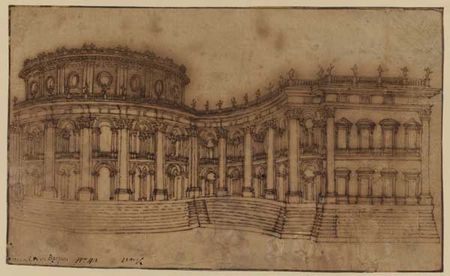
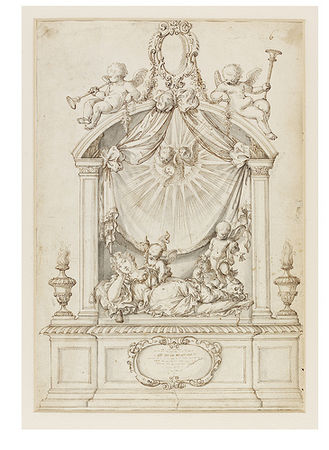







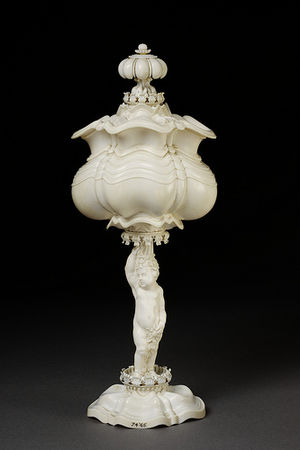
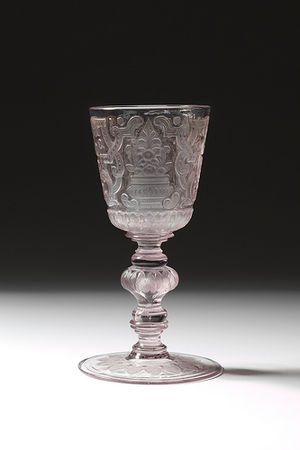


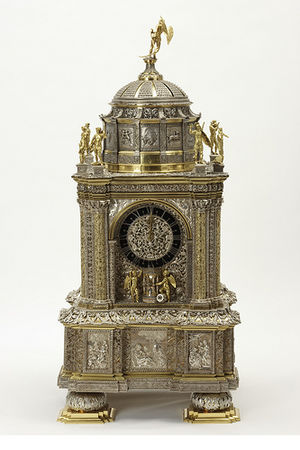
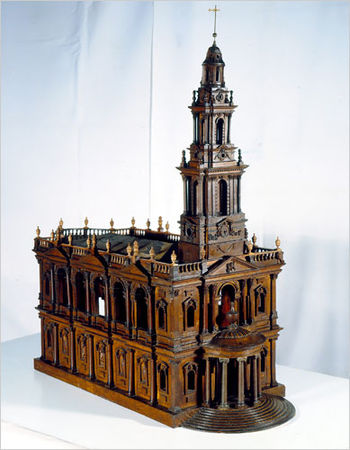





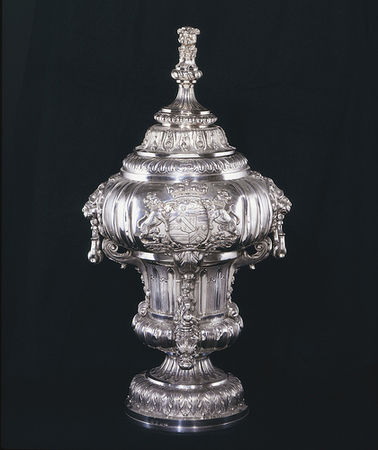
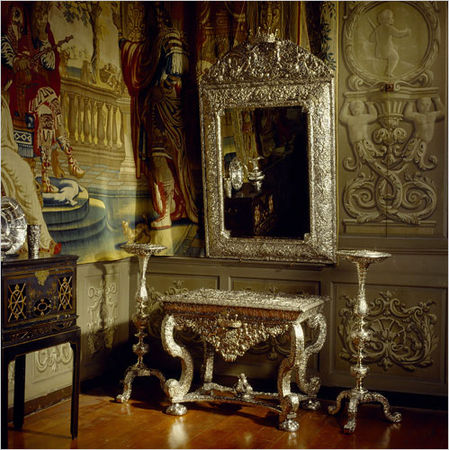


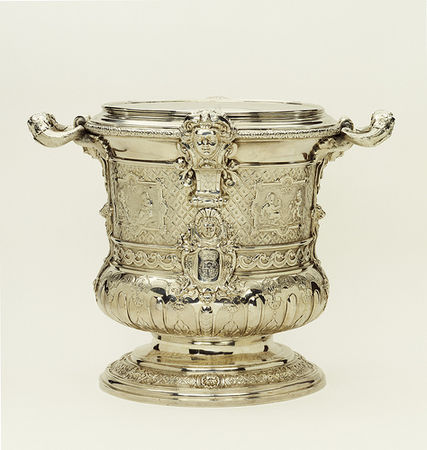


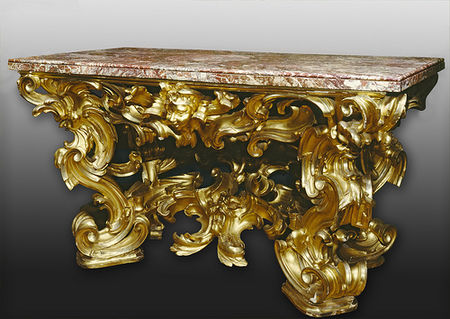


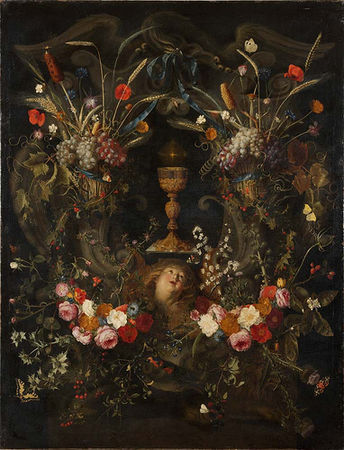



/http%3A%2F%2Fstorage.canalblog.com%2F17%2F05%2F119589%2F129512508_o.jpg)
/http%3A%2F%2Fstorage.canalblog.com%2F53%2F49%2F119589%2F110115706_o.jpg)
/http%3A%2F%2Fstorage.canalblog.com%2F88%2F04%2F119589%2F110115653_o.jpg)
/http%3A%2F%2Fstorage.canalblog.com%2F87%2F94%2F119589%2F110080197_o.jpg)